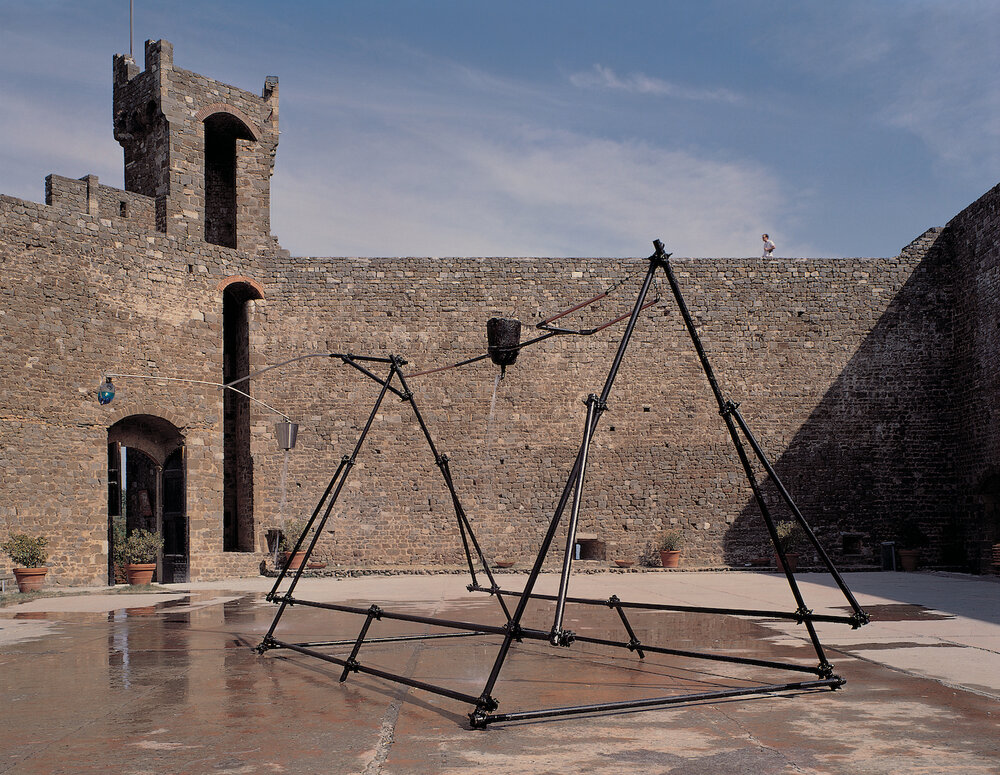For the second edition of Arte all’Arte, curators Jan Hoet and Giacinto di Pietrantonio invited Gilberto Zorio to exhibit his works inside the fortress of Montalcino.
“But if up to now we have mostly spoken in the past tense, if we have viewed this art as a testimony of history and prehistory, it must be said that it is precisely their spatial structure that also makes them appear like machines from other planets, from other worlds—even future ones. Machines of wonder for life, and as the artist himself says, bearers of: ‘An energy to exorcise death.’
Thus, it is not only the artist who returns to art—more accurately, he is the one who makes art and allows us, through his works, to experience art, to move from life to art. And this is what we do every time we encounter a true work of art, as in the fortress of Montalcino, where Zorio has installed one of his flying sculptures, one of his machines of balance and alchemical transformation.
A metamorphosis which, this time, is not expressed through the slow change of verdigris, but in the accidental spreading of water—that primary element, original and life-giving liquid, which, falling from above as in this case, releases and generates that energy which naturally brings both art and life into the world.
But if water naturally brings life into the world, then fire is the other element which, through its energy, creates by the hand of man. In fact, it is thanks to its control that it has been possible to create both spiritual and secular civilizations—to write the tablets of the law, to cast the golden calf, to forge iron, and to transition from raw to cooked.
And it is this creative power of fire that Zorio makes visible for one evening, presenting in the courtyard of the fortress a glassblower shaping alembics—alchemical and chemical vessels of material transformation—which the artist has long incorporated into his works, so that through the creative process of art, we may also grasp the process of the creation of life."
Giacinto di Pietroantonio, Arte all’Arte II, 1997

